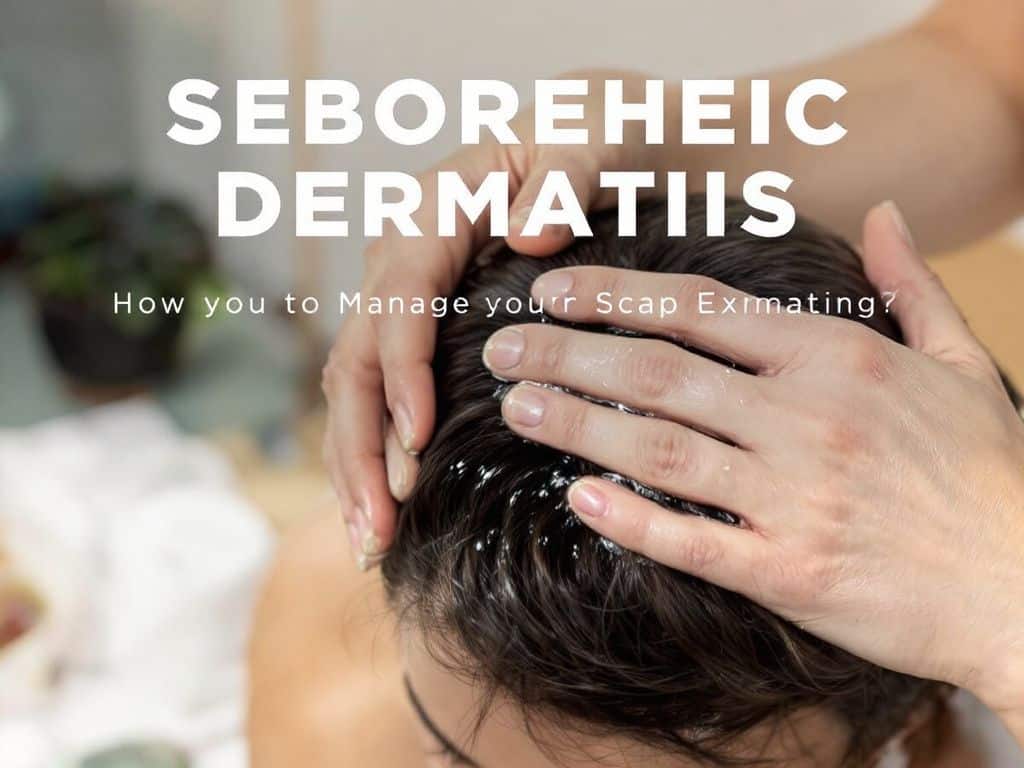
Have you ever experienced those stubborn, flaky patches on your scalp that just won’t quit? We’re diving into the world of seborrheic dermatitis today, so if those flakes have you frustrated or you’re curious to learn more, stick around—we’re in this together.
What Exactly Is Seborrheic Dermatitis on the Scalp?
Let’s get real for a second: waking up with itchy scalp and brushing off white flakes isn’t fun. Many of us just chalk it up to dandruff, but there might be more to the story. Seborrheic dermatitis is a common skin condition, a bit more persistent than your average dandruff. It’s chronic, inflammatory, and tends to show off with flaky, white-to-yellowish scales.
Dandruff vs. Seborrheic Dermatitis: Are They Twins?
There’s a bit of confusion here, and you’re not alone if you’ve mixed them up. Think of dandruff as the less rebellious sibling, a milder version of the dermatitis condition. While dandruff flakes aren’t usually inflamed, seborrheic dermatitis might show up with some added redness and irritation. If you’re dealing with flakes across your T-zone or on your eyebrows, that might be dermatitis spreading its wings beyond the scalp.
Why Does Seborrheic Dermatitis Grab Onto Your Scalp?
You might be wondering why—why me, why now? Well, seborrheic dermatitis loves certain conditions. It’s partly due to an overgrowth of a yeast called Malassezia. Everyone has it, but for some, it just gets a little out of hand. Stress, chilly weather, and even your genetic makeup can influence how this all plays out. Imagine your scalp going through its version of an overstimulated group chat, with your oil glands and yeast acting up.
The Role of Oil: How Your Scalp’s Sebum Might Be Contributing

Let’s talk oil—sebum to be specific. It’s produced by your sebaceous glands and moisturizes your hair. Keep in mind, seborrheic dermatitis often kicks into high gear in these oil-rich zones. Curious why? Because that’s the yeast’s favorite snack. More oil often means more yeast growth, leading to a flare-up.
Navigating Life with Seborrheic Dermatitis: Management Strategies
So what’s the plan if you’re ready to tackle seborrheic dermatitis on the scalp? Remember, it’s about calming things down and keeping flare-ups at bay. Here are some management tips to give a try:
1. Grab a Specialized Shampoo
Start with something that targets that hyperactive yeast. Zinc pyrithione, selenium sulfide, and ketoconazole are your go-to ingredients. These antifungal shampoos help reduce the yeast living it up on your scalp. Use it a couple of times a week—think of it as a recurring date with reduced flakes.
2. Gentle Wash Routine
Ease into this one. You’ll want to avoid anything that feels like an itchy wool sweater on your scalp. Choose gentle, sulfate-free shampoos and keep your water warm, not fire-hot.
3. Brush Off the Stress
Yeah, easier said than done, right? But stress can be a trigger. Try winding down with activities that take the edge off: yoga, a good book, belting out your favorite songs when no one’s listening, whatever works!

4. Consider Scalp Oils—But Not Too Much
For some, a bit of soothing oil can be relaxing and helpful. Tea tree oil has anti-inflammatory properties. A little goes a long way, remember. You want some moisture, not an oil spill situation.
5. Visit a Dermatologist
If these tips aren’t cutting it, or the dermatitis seems to be giving you a harder time, it might be worth consulting a pro. Dermatologists can offer prescription treatments like corticosteroids or topical calcineurin inhibitors for when things get more serious.
Everyday Hiccups and How to Avoid Them
Missing out on these common pitfalls might save you a load of irritation:
Picking and Scratching
Those flakes are tempting, aren’t they? But try to resist. Scratching can worsen inflammation and potentially lead to infection. Yep, hard pass on that one.
Incorrect Product Usage

We’ve all fallen for the quick-fix lure of heavy-duty dandruff shampoos used excessively, assuming they’ll speed up the results. But overuse can actually exacerbate dryness, leading to—you guessed it—more flakes.
Overlooking a Balanced Diet
Believe it or not, what goes into your body can seriously impact how your scalp feels. Omega-3 fatty acids and a diet rich in fresh fruits and veg can keep your skin balanced, overall benefiting your scalp.
Quick Comparison: Dandruff vs. Seborrheic Dermatitis
Sometimes visuals do the trick. Here’s a quick comparison to help you determine what you’re dealing with:
| Feature | Dandruff | Seborrheic Dermatitis |
|---|---|---|
| Flakes | White, dry | Yellowish, oily |
| Inflammation | Rarely | Frequently |
| Itching | Mild | Often more pronounced |
| Area of Impact | Mainly scalp | Scalp, eyebrows, sides of nose |
| Triggers | Dryness, irregular shampooing | Oily skin, changing seasons |
| Treatment | Anti-dandruff shampoos | Antifungal shampoos, medicated treatments |
Embrace the Process
At the end of the day, becoming comfortable with getting to know your skin is a big win. Understanding triggers and what works best for your scalp takes some trial and error. Staying consistent with your care routine can seriously quiet down those flare-ups.
Consider seborrheic dermatitis as a peculiar friend—one that requires some patience but can be managed with persistence. Keep the dialogue open with your dermatologist if new symptoms sprout or if current routines aren’t cutting it. With the right approach, that clean shirt you just put on can stay dander-free for longer than usual—a win worth celebrating.
Frequently Asked Questions
What is seborrheic dermatitis on the scalp?
Seborrheic dermatitis on the scalp is a chronic, relapsing form of eczema that typically appears as dandruff or a rash. It is characterized by scaly, greasy patches and can cause itchiness and irritation. In infants, it is known as cradle cap, while in older children and adults, it is often referred to as dandruff[1][3][5>.
What causes seborrheic dermatitis on the scalp?
The exact cause of seborrheic dermatitis is unknown, but several factors can trigger or exacerbate the condition. These include stress, genetics, certain medical conditions, and living in cold, dry climates. Additionally, factors like acne, oily skin, alcoholism, psoriasis, rosacea, AIDS, and depression can increase the risk of developing seborrheic dermatitis[1][3][5>.
How is seborrheic dermatitis on the scalp treated?
Treatment for seborrheic dermatitis on the scalp often involves the use of dandruff shampoos containing ingredients such as pyrithione zinc, selenium sulfide, ketoconazole, tar, tea tree oil, or salicylic acid. For mild to moderate cases, a dandruff shampoo may be sufficient. In more severe cases, antifungal creams, gels, or foams and corticosteroid medications may be prescribed. It is important to follow the dermatologist’s recommendations for the frequency and duration of shampoo use[3][5][1>.
Can seborrheic dermatitis on the scalp be prevented or cured?
There is no cure for seborrheic dermatitis, but symptoms can often be managed and controlled with treatment. In some cases, the condition may clear up on its own without treatment. To prevent flare-ups, patients often continue to use dandruff shampoo once a week. Regular skincare routines and avoiding triggering products can also help in managing the condition[1][3][5>.
References


Leave a Reply